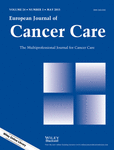Measuring the costs of cancer treatment – what model should we use?
The cost of providing cancer care to an ageing population is growing, and healthcare planners around the world are questioning how they can continue to deliver high-quality care in an equitable way. There have been calls for radical shifts in cancer policy and better use of cost-saving technologies along with more transparent regulatory systems (Sullivan et al. 2011). In this issue of the Journal we feature several papers examining the cost of cancer treatments. Dranitsaris et al. (2015) describe a new method to derive prices for new drugs coming on to the market based on drug performance – in the hope that this will provide better access to new treatments and greater transparency in drug pricing; clearly these methods warrant consideration. See also the accompanying Letter to the Editor from Yusuf Hamied – he has been a tireless campaigner for access to affordable medications, particularly in developing countries. In his letter he highlights some of the inequities that exist (in terms of access to lifesaving treatments) between wealthy and developing countries (Hamied 2015).
van Gils et al. (2015) describe ‘real world’ studies in which effects and costs of treatments are examined in daily clinical practice. They highlight the profound economic consequences of clinical choices made on a day-to-day basis in oncology. In a similar vein, Frederix et al. (2015) report a longitudinal costing study in the Netherlands and Belgium on the costs of treating metastatic breast cancer patients. The study highlights the importance of applying caution in economic studies when comparing different countries. Liu et al. (2015) used a national health insurance research database to examine the cost-effectiveness of radiotherapy for oesophageal cancer in different hospital settings – a very neat comparison of costs and outcomes across a range of treatment centres. The papers we have included illustrate the breadth of cost-effectiveness research in cancer – there are many methodologies used, and the focus on cost in cancer is only going to increase as the prevalence of cancer rises (driven by demographic changes), and ever more costly treatments become available.
In other topics this month: The illness perception questionnaire has been widely used in cancer research literature (Husson et al. 2013) – it assesses illness representations and can be very helpful in analysing engagement in cancer preventive behaviours. An Australian study in this issue (Petrak et al. 2015) looked specifically at the use of this instrument in the local Croatian and Lebanese population in the context of breast and cervical cancer prevention. These kinds of validation studies are important in multicultural populations; in their absence, it is difficult to determine how much results have been influenced by cultural, language and other factors.
Measuring time to a cancer diagnosis can be fraught with difficulty – measuring key time points such as date of first symptom, date of first presentation and date of referral can be accompanied by significant methodological challenges (Weller et al. 2012). Yuan et al. (2015) describe a process for measuring this diagnostic interval based on registry data; they also describe the method for detecting the number of screened-detected cases as opposed to cases detected through symptomatic diagnosis. These methods are crucial in international comparisons of cancer survivals such as the International Cancer Benchmarking Partnership (Butler et al. 2013). In a similar vein Dodou and de Winter (2015) examine agreement between self-reported and registered participation in colorectal cancer screening. The paper highlights the potential pitfalls in relying on self-reported cancer screening and likely reflects common misunderstandings about cancer screening in the population.
There is very significant international interest in measuring quality of cancer care – there is disagreement about which parameters we should measure and the most appropriate methods of collecting data on quality (American Cancer Society 2010). Arrighi et al. (2015) report on a ‘patient jury’ approach; the paper provides fascinating insights into patient perspectives on cancer care in Spain. Stordeur et al. (2015) examine indicators of quality for oesophageal and gastric cancer in Belgium – they describe a rigorous process for developing indicators based on relevance, reliability, interpretability and actionability.
In the clinical domain we have an interesting practice survey on acute radiation-induced skin toxicity; this is a very significant and potentially disabling condition (Salvo et al. 2010), and O'Donovan et al. (2015) demonstrate a range of approaches to its management. Other clinical papers examine the safety of cytotoxic agents and occupational health implications in oncology units (Kieffer et al. 2015), while Schwappach and Gehring (2015) examine safety concerns among oncology staff – their study highlights the need for high levels of interpersonal communication and coping skills to promote communication about safety issues in workplaces.
So, quite a mixture in this issue of the Journal; keep a look out for our September issue in which survivorship will feature – it will include a number of original articles and commissioned pieces. As ever we are grateful for the continuing high number of submissions to the Journal, and we hope this is meeting the needs and expectations of our multidisciplinary readership. Again, we are always open to suggestions and new ideas on form and content for the Journal.




